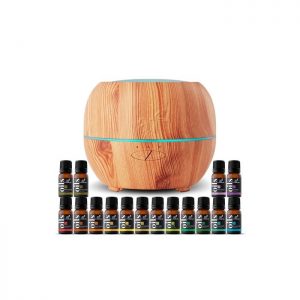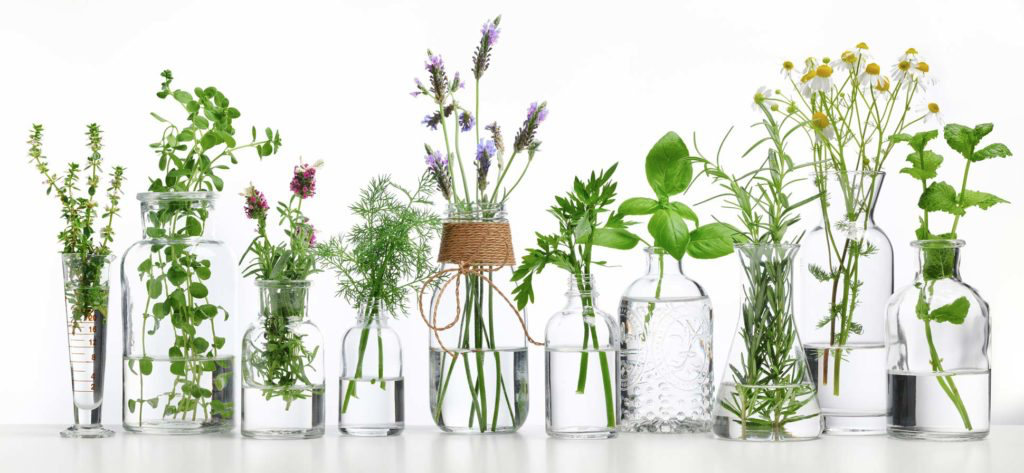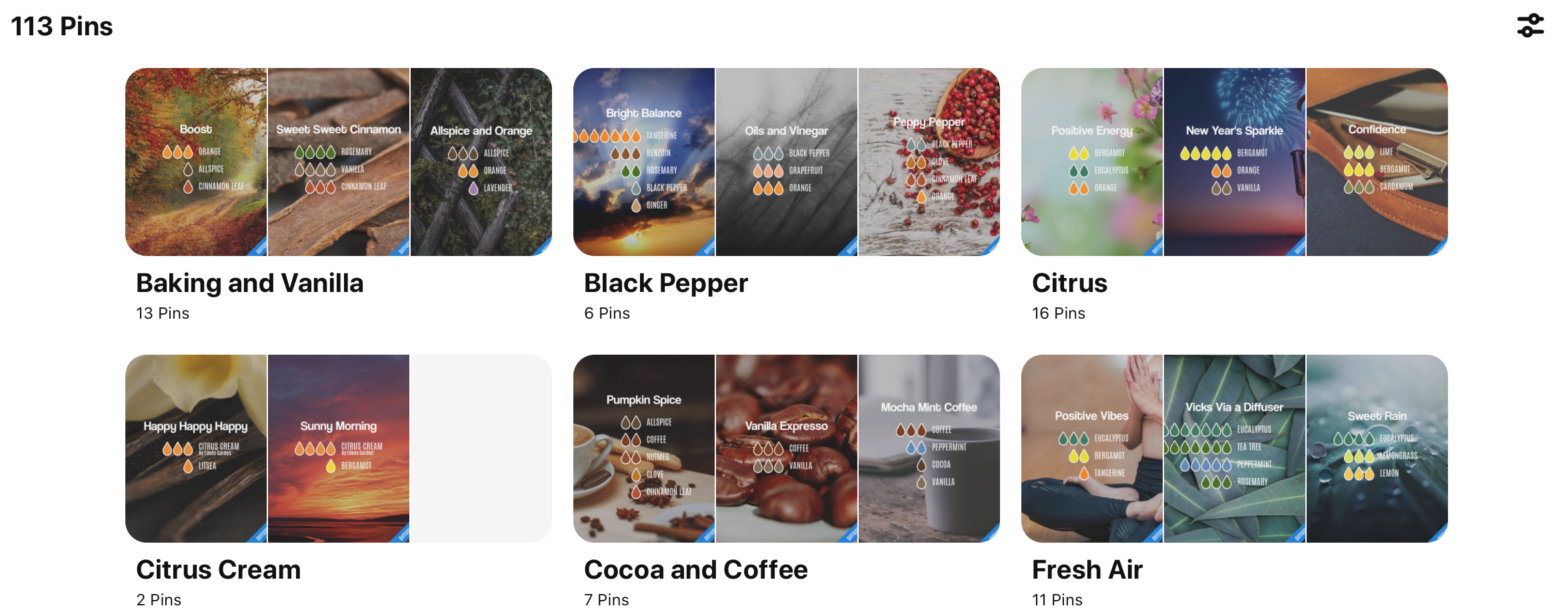Today I’m going to talk about diffusing essential oils.
I feel the need to start off with some warnings: there are endless references online about the various benefits of essential oils taken as aromatherapy, absorbed through the skin, or ingested directly. I am not going to endorse ANY of those claims. It’s not that I don’t believe that plants have healing properties. I do. I have direct personal experience, as well as chemical and biology training that supports this concept. That being said: take anything you see on a web site about how this oil will relieve pain, purge toxins, or whatever as an opinion rather than fact unless you can find some solid scientific articles backing it up with data. The claims vastly exceed the data available.
So, if I am waving you off on all the benefits up front, why am I still going to write this post?
- Aromatherapy does have a very real ability to adjust moods; and
- Diffusing essential oils can be safer than using artificial air fresheners.
Since I am me, I’m going to go into both of those points after I explain what essential oils are, but I’m going to do it in reverse order.
What are essential oils?
TL;DR version: oils from plant material that has been distilled or pressed.
If you are a bit more science-y, essential oils are volatile compounds distilled or pressed from aromatic plants. Volatile means that the essential oil compounds evaporate in air. Essential oils are called oils because they are oil soluble and hydrophobic (separate from water). The molecules in essential oils are incredibly compact. This fact is what makes them volatile—or easily evaporate. When applied topically to the skin, you will find that their small molecules allow them to absorb and assimilate into the body with ease. Although they are oils, most essential oils are not oily to the touch.
Essential oils are nature’s defense mechanism for plants and cells. They are produced by plants to be helpful in many ways:
- They ward off predatory insects;
- They attract insects that help the plant pollinate;
- They guard the plant against damage caused by the sun and temperature extremes;
- They keep the plant’s cells healthy by protecting it from bacteria, fungi, and microbial attacks; and
- They help to heal cellular damage caused by herbivores.
Essential oils are highly-concentrated compounds. Often they are 50–70 times more powerful than herbs. An often quoted example is that one drop of Peppermint essential oil is as potent as 28 cups of peppermint leaf tea.
Essential oils can be used many other ways: in roll-ons, in cooking, and in making your own skin and haircare products. I’ve only dabbled in some of this, and am ill-equipped to discuss anything that advanced today. We’re going to stick with a gentle entry point: letting essential oils smell good in your home.
Essential Oils Can Be Safer
Air fresheners emit a fragrance to provide an aroma to a space, to mask an odor, or both. Air fresheners come in variety of formats including sprays, gels, oils, liquids, solids, plug-ins, hanging disks, beads, potpourri, wick diffusers, and scented candles; in active or passive forms; and with instant, intermittent, or continuous release. Air fresheners also include so-called air care, deodorizer, odor control and neutralizer products. Air fresheners can emit over 100 different chemicals, including volatile organic compounds (terpenes such as limonene, alpha-pinene, and beta-pinene; terpenoids such as linalool and alpha-terpineol; ethanol, formaldehyde, benzene, toluene, and xylene) and semi-volatile organic compounds (such as phthalates). Way too much chemistry, way too soon? Basically, there are chemicals to help make it smell good, chemicals to keep it in a solid/liquid/gas state, and chemicals to help stabilize, preserve, and distribute the mixture.
Some of these chemicals can be irritating or toxic to humans or their pets. Some of these can trigger allergy symptoms. I’ve had trouble with both of these in my life, but I actually do very much enjoy many natural scents even if perfumes can send me to the emergency room.
Using essential oils allowed me to experiment with each oil, one at a time. I could figure out it I liked the scent or not. I could figure out if it was starting to trigger an allergic reaction. In my case, not entirely unsurprisingly, I learned that sandalwood essential oil triggers allergy attacks. I could feel that tiny hitch in my lungs within four minutes of turning on the diffuser, at which point my husband got the job of dumping the few ounces of water in which I had dissolved 3 drops of sandalwood oil down the sink. He rinsed out the diffuser while I quickly showered. The other 15 oils in my starter kit provoked no allergic reactions, but it turns out that I find patchouli oil very unpleasant. So, two bottles got wrapped in plastic wrap and moved to the side, and the rest became the foundation for my ever-expanding collection. This was a lot like the scratch allergy testing I went through as a child, only self-organized. Great! Now I know for sure why perfume hates me, but I can play safely with scents as long as I avoid recipes containing that oil.
What is a Diffuser?
An electric diffuser is device uniquely designed to dispense essential oils into the atmosphere where they can remain suspended for up to several hours. It is the most effective way to finely vaporize essential oils without harming or altering their valuable properties. Since there is no heat involved in this process, there is no change in the chemical structure of the vital chemical constituents of the essential oil. There’s a little device that sits at the bottom of the liquid and provides ultrasonic vibration to disperse micro fine particles of cold water mixed with drops of essential oils into the air without applying heat. The size and power of the unit determines the effective area.
I’ve owned a bunch of these over the last few years and all of them have had a feature I absolutely love: when the water runs out, they turn off. So not only is there no heat in the process, the vibration stops when the water runs out. In the last three years the single worst accident I have been able to manage (and I am very skilled at summoning accidents out of absolutely no where) is that I once had a sock slip on the floor, so I slopped some water with oil on the floor, and I had to clean it up.
 Here’s the process for setting up the diffuser:
Here’s the process for setting up the diffuser:
- Take the lid off;
- Rinse it out with tap water;
- Add some new tap water;
- Add from 1-15 drops of essential oils to the water;
- Put the lid back on,
- Press the “Mist” button to start it; and
- Press the “Lights” button if I’m feeling fancy.
Cleaning involves a teaspoon of white vinegar and more water every month or so.
Change Your Mood
When essential oils are diffused into the air, the molecules are broken up into micro-fine mist particles. These mist particles stay suspended in the air for long periods of time. This may reduce bacteria and mold, and it definitely can mask or add doors to the air. These micro-mist particles also benefit those who inhale them. When essential oils are inhaled, it travels through the nasal passage to a receptor neuron that transports it up to the limbic system. The limbic system supports a variety of functions, including emotion, behaviour, motivation, memory and olfaction. For example, if an essential oil has a frequency known to relax or stimulate, the limbic system receives this input and creates neurochemicals that are sent through the body to relax or energize and become more active.
Want that again in plain English? Scent triggers memories. A smell can bring you back to a different place and time, and connect you to the emotions associated with that event. Mint and citrus energize me, bergamot soothes me, cinnamon and nutmeg warm me. You might react differently to each of those oils, but you WILL react. Then it is just a matter of figuring out what works for you, and playing with variations on those themes.
Diffusing essential oils allows you to control the amount of oil you want to diffuse more easily by adding more or less oil depending on how you strong would like it.
My Essential Oil Diffuser Recipes
If you follow this link out to Pinterest, you will find a collection of essential oil recipes that I have already used, or am planning to use. They’re sorted into categories to help me find things faster, now that my collection has grown. If you want to try any of these recipes, it works the same way as baking… you can double or triple the recipe. My recipes often use very few drops in the diffuser, because I find that my sense of smell can be very acute, and I don’t always need much to do the job. Your mileage may vary… my husband cannot smell some of these until I double the recipe or he leans over the diffuser. He worked in a Texaco gas station in his teens, pumping leaded gas a full five years after the oil companies were fully aware of how bad an idea that product was, and I can attest that this does not do wonders for olfactory acuity.
I got my start with a collection from Art Naturals, because at the time it gave me access to a 16-bottle kit and a diffuser that I thought would be perfect for figuring out if I could have scent in my life. Since that time, I have experimented with a variety of other suppliers, and am currently favouring two companies in Mississauga, Ontario: New Directions Aromatics and Rocket Robin.
Because I am me, I remember the names using songs: New Sensation by INXS and Rockin’ Robin by Bobby Day. If either of those songs gets stuck in your head, well, I can’t help you with that… Sorry!


